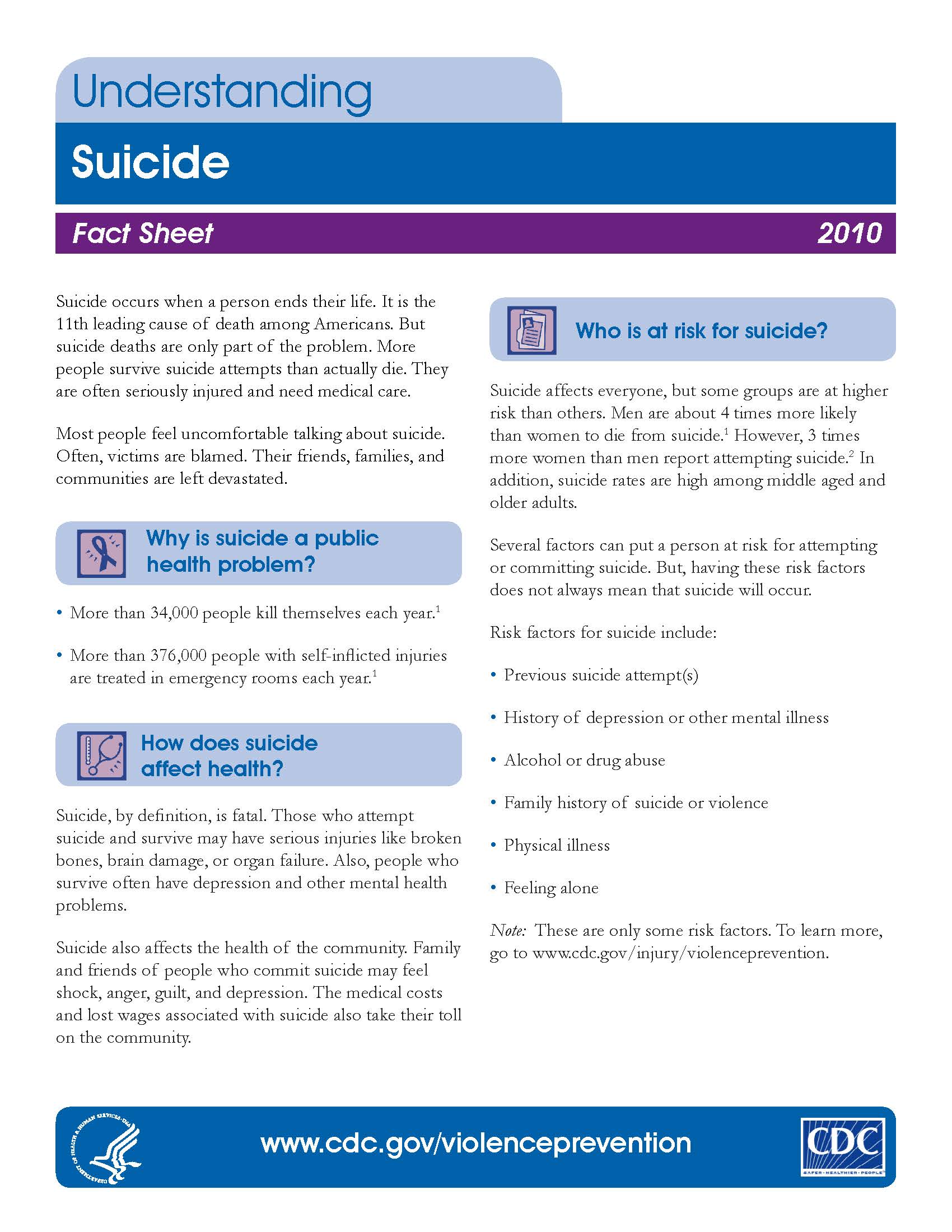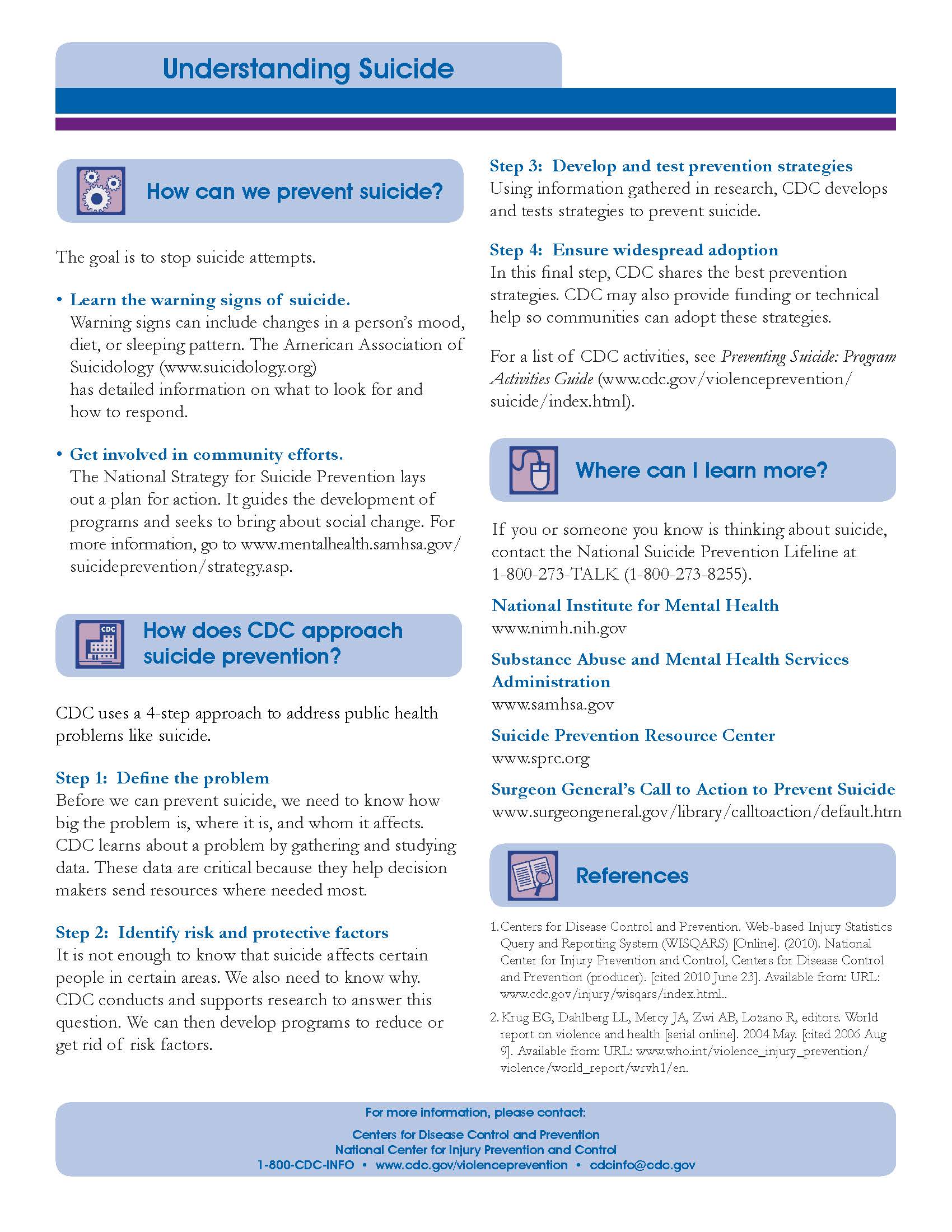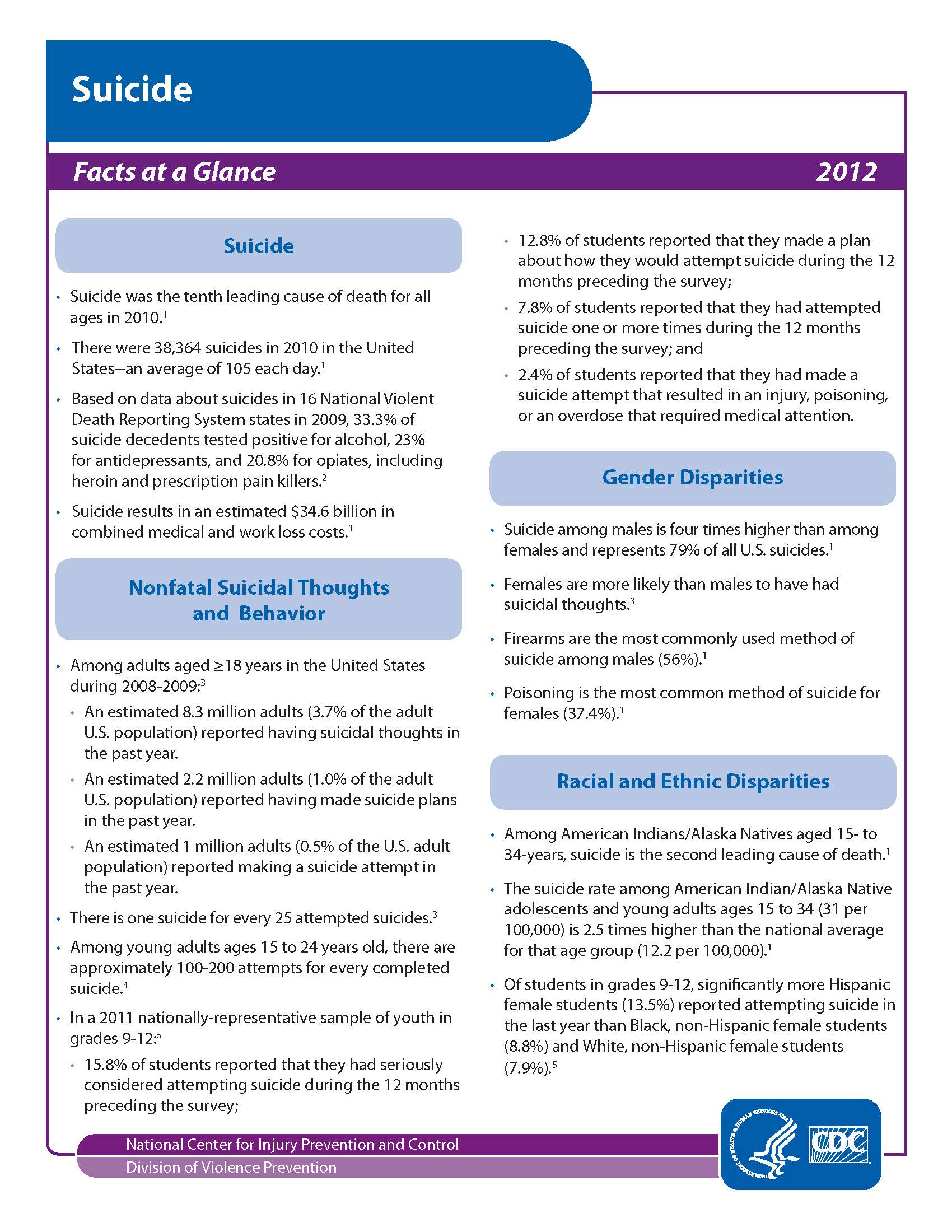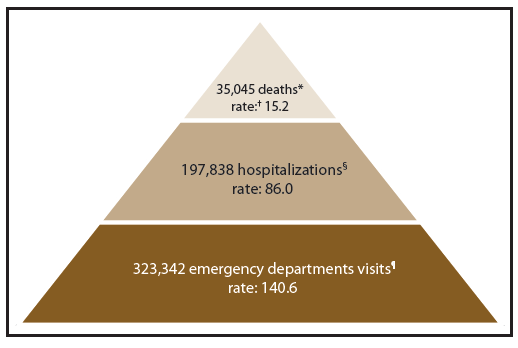- Each year, more than 34,000 suicides occur in the United States. September 10th is World Suicide Prevention Day. Learn more about preventing suicides in your community.
Suicide (i.e., taking one’s own life) is a serious public health problem that affects people of all ages. For Americans, suicide is the eleventh leading cause of death. It resulted in 34,598 lives lost in 2007. The top 3 methods used in suicides included firearm (50%), suffocation (24%), and poisoning (18%).
Deaths from suicide are only part of the problem. More people survive suicide attempts than actually die. In 2009, more than 374,000 people received medical care for self-inflicted injuries at Emergency Departments across the United States.
Several factors can put a person at risk for suicide. However, having these risk factors does not always mean that suicide will occur. Some of the risk factors identified by research include:
- History of previous suicide attempts
- Family history of suicide
- History of depression or other mental illness
- History of alcohol or drug abuse
- Stressful life event or loss
- Easy access to lethal methods
- Exposure to the suicidal behavior of others
Most people are uncomfortable with the topic of suicide. Too often, victims are blamed and their families and friends are left stigmatized. As a result, people do not communicate openly about suicide. Thus an important public health problem is left shrouded in secrecy, which limits the amount of information available to those working to prevent suicidal behavior.
The good news is that research over the last several decades has uncovered a wealth of information on the causes of suicide and on prevention strategies. Additionally, CDC is working to monitor the problem and develop programs to prevent suicidal behavior.
If you or someone you know is having thoughts of suicide, contact the National Suicide Prevention Lifeline at 1-800-273-TALK (1-800-273-8255) or visit the National Suicide Prevention Lifeline Web site. http://www.suicidepreventionlifeline.org/
Know the Warning Signs and Get Help
Suicide has many warning signs, visit the Web site for American Association of Suicidology For more information, http://www.suicidology.org
Suicide Prevention
Suicide is a serious public health problem that can have lasting harmful effects on individuals, families, and communities. While its causes are complex and determined by multiple factors, the goal of suicide prevention is simple: Reduce factors that increase risk (i.e. risk factors) and increase factors that promote resilience (i.e. protective factors). Ideally, prevention addresses all levels of influence: individual, relationship, community, and societal. Effective prevention strategies are needed to promote awareness of suicide and encourage a commitment to social change
New Report is the First to Present State-Level Findings on Suicidal Thoughts and Behavior
Every 15 minutes, someone dies by suicide in this country. And for every person who dies, there are many more who think about, plan or attempt suicide. “Suicidal Thoughts and Behaviors Among Adults > 18 Years United States, 2008-2009,” a new report released by the Centers for Disease Control and Prevention, examines that pattern among adults, 18 years and older, in the United States by state.
This report is the first to present state-level data concerning suicidal thoughts and behavior among adults in the U.S. The research supports other findings that the public health burden of suicide throughout the United States is much greater than the number of deaths.
The findings in this report document important state-specific differences in the reported prevalence of suicidal thoughts, plans, and behavior both overall and when examined by age, sex, and race/ethnicity.
Public health burden of suicidal behavior among adults aged ≥=18 years — United States, 2008
Results show:
- The prevalence of serious suicidal thoughts, suicide planning, and suicide attempts was significantly higher among young adults aged 18–29 years than it was among adults 30 years old and older.
- An estimated 8.3 million (annual average) adults (3.7% of the adult U.S. population) reported having serious thoughts of suicide in the past year, ranging from 2.1% in Georgia to 6.8% in Utah.
- More than 2.2 million adults (1.0% of adults) reported making suicide plans in the past year, ranging from 0.1% in Georgia to 2.8% in Rhode Island.
- More than 1 million adults (0.5% of adults) reported attempting suicide in the past year, ranging from 0.1% in Delaware and Georgia to 1.5% in Rhode Island.
These findings underscore the importance of prevention, including public health policies, programs and strategies that can help decrease suicide-related thoughts and behaviors.
View an PDF copy of this document [ 973KB]





